APS-C lenses have a slightly longer reach than full-frame lenses even though they have the same focal length because of the difference in sensor size. If you’re looking for similar results when using an APS-C lens and a full-frame lens, you need to compose accordingly. Photographer Julia Trotti compares the results of some prime lenses on an APS-C body and a full-frame body and shows you how you can get similar results:

Full-frame sensors cover a greater area of the image circle formed by the lens. On the contrary, APS-C lenses cover a relatively small area, more toward the center of the image circle. This is the reason why APS-C cameras have a greater reach than full-frame cameras when using the same lens.
To give perspective on how different prime lenses perform on an APS-C body compared to a full-frame body, Trotti uses her 24mm, 35mm, 50mm, 85mm, and135mm with a Canon 7D Mark II APS-C camera. She then compares the results with the images from her full-frame Canon 5D Mark IV.
Fixed Distance Between the Subject and the Camera
Trotti takes multiple images using her different prime lenses while maintaining a constant distance between the model and herself. The field of view is much wider in the case of the full-frame camera.
Sigma 24mm Prime Lens
Canon 35mm f/1.2 Mark II Prime Lens
Canon 50mm f/1.2 Prime Lens
Canon 85mm f/1.2 Prime Lens
Canon 135mm f/2 Prime Lens
Full Body Composition in Portrait Orientation
Next, Trotti asks the model to stay in the same spot while she herself moves around to fill the frame in a portrait orientated full-body composition with her 7D Mark II. Then, from the same spot, she takes an image with the 5D Mark IV to demonstrate the difference in the field of view.
Using Sigma 24mm Prime Lens
Canon 35mm f/1.2 Mark II Prime Lens
Canon 50mm f/1.2 Prime Lens
Canon 85mm f/1.2 Prime Lens
Canon 135mm f/2 Prime Lens
“Out of these full body tests, my favorite focal lengths on crop frame were the 35mm and 50mm.”
Landscape Orientation Mid-Frame Composition
Again, Trotti has the model stay put in a spot and composes with the model in the center of the landscape orientation using her 7D Mark II. Then, from the same spot, she switches over to her 5D Mark IV to show the difference in coverage.
Sigma 24mm Prime Lens
Canon 35mm f/1.2 Mark II Prime Lens
Canon 50mm f/1.2 Prime Lens
Canon 85mm f/1.2 Prime Lens
Canon 135mm f/2 Prime Lens
Extreme Close-up Head-shots
For the final test, Trotti composes so as to have as much of the model’s face in the frame using her 7D Mark II. Then again, from the same spot, she takes the image using her 5D Mark IV.
Sigma 24mm Prime Lens
There’s a good amount of distortion in both of these images because wide-angle lenses tend to exaggerate features when the subject is close to the lens.
Canon 35mm f/1.2 Mark II Prime Lens
“By the 35mm shot, you can see a lot of distortion on the full frame but not so much in the crop.”
Canon 50mm f/1.2 Prime Lens
At 50mm, the effects of distortion are almost gone in the crop frame. However, with the full-frame, there’s still a bit of distortion visible.
Canon 85mm f/1.2 Prime Lens
Canon 135mm f/2 Prime Lens
“My absolute favorite focal length on crop frame is the 50mm, which isn’t a surprise since my favorite lens for these kinds of close-ups on full frame is the 85. My close second favorite would be the 85mm on crop.”
Which setup do you think produces the best result? Let us know.
Like This Article?
Don't Miss The Next One!
Join over 100,000 photographers of all experience levels who receive our free photography tips and articles to stay current:
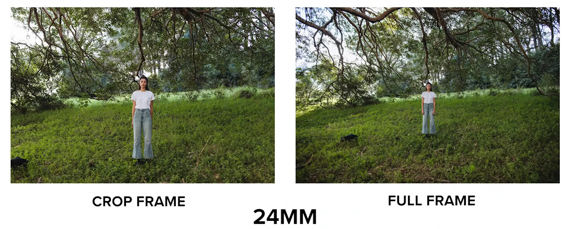
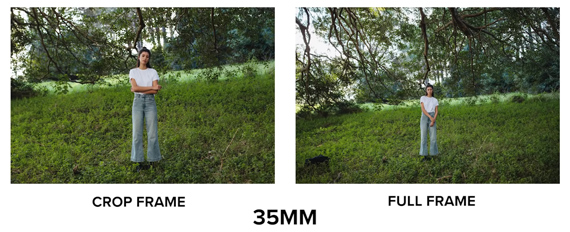
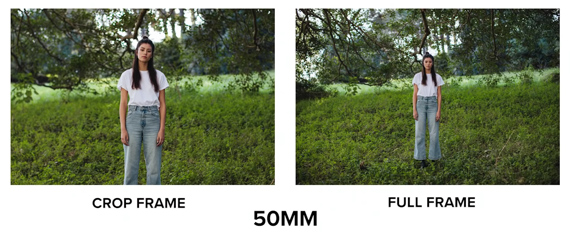
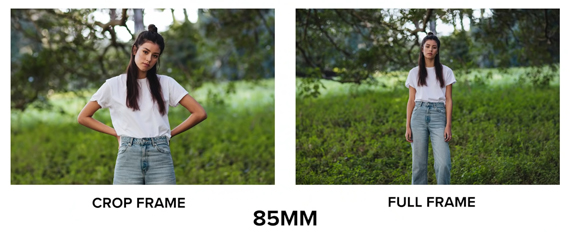
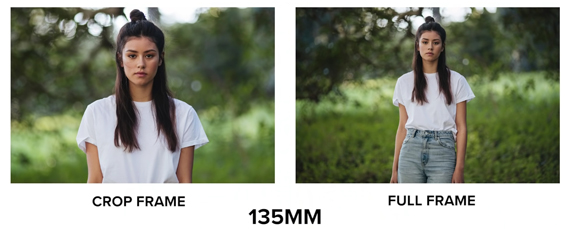
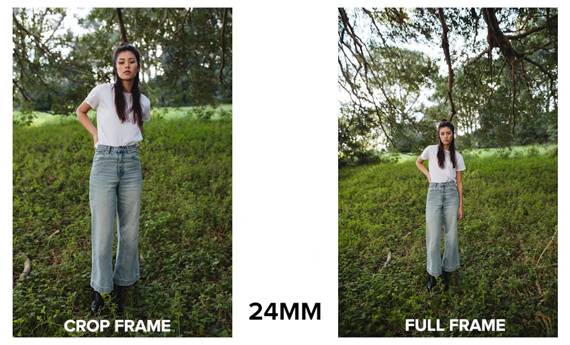
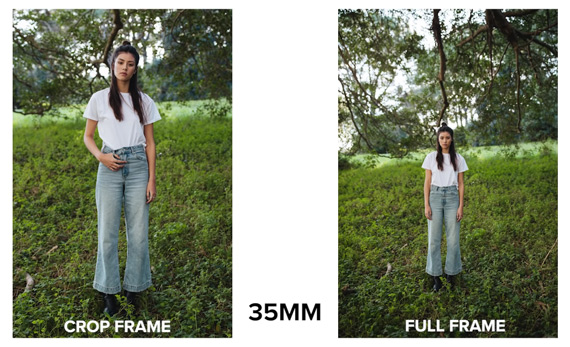
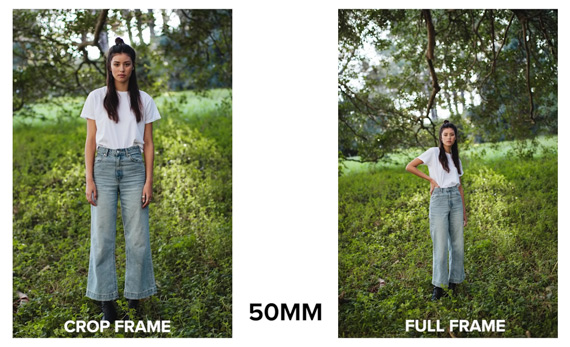
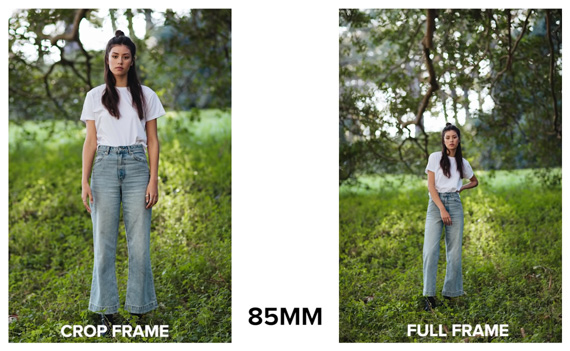
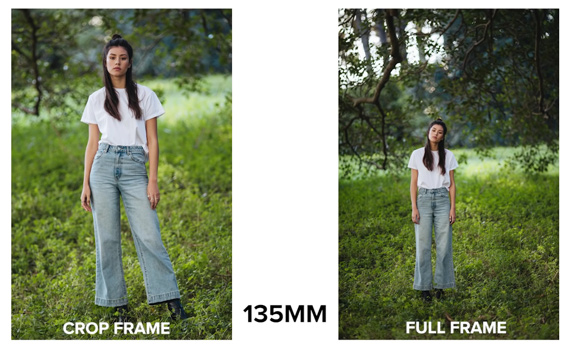
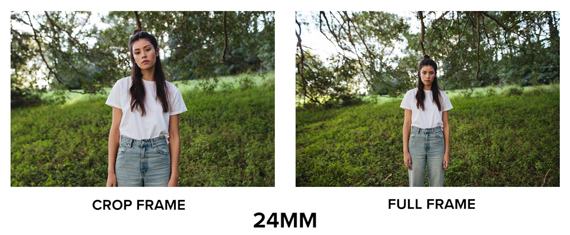
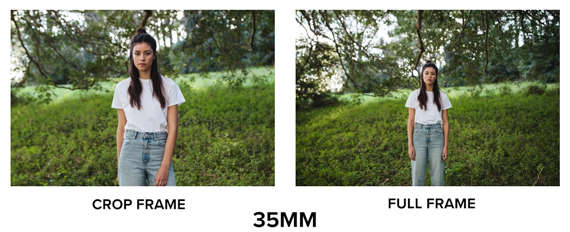
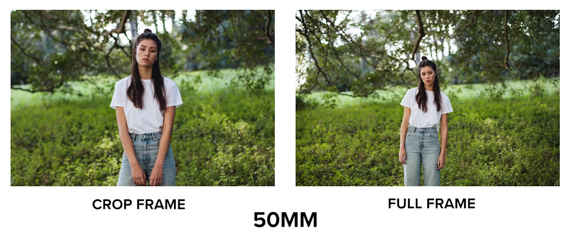
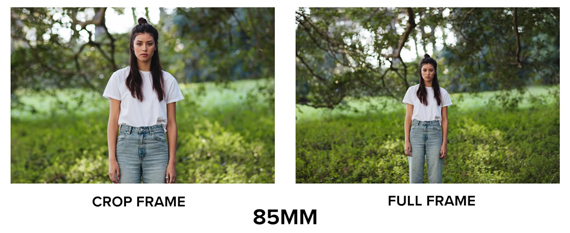
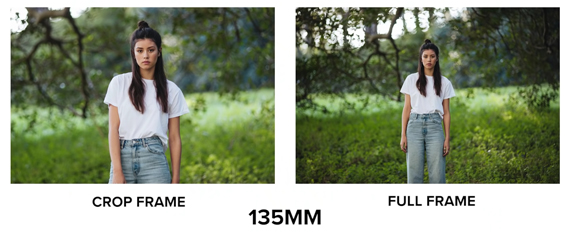
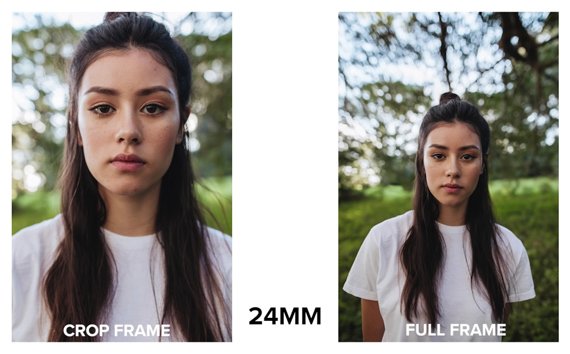
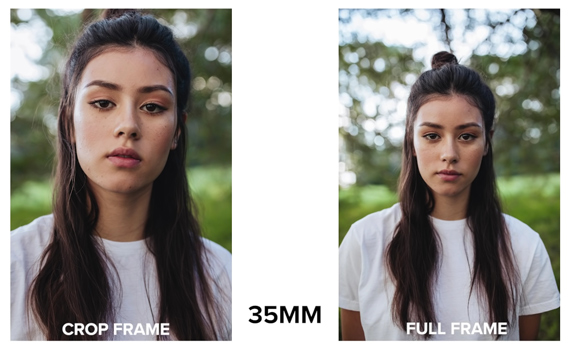
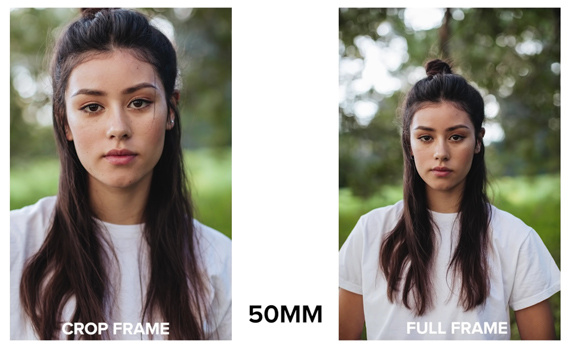
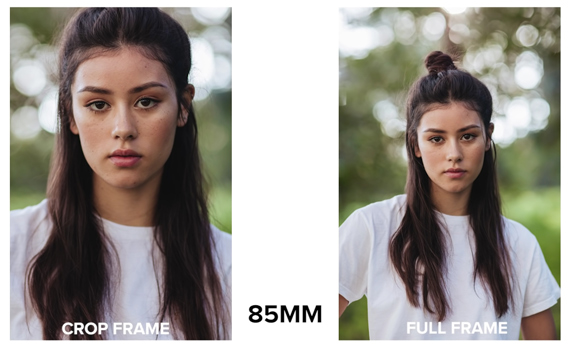
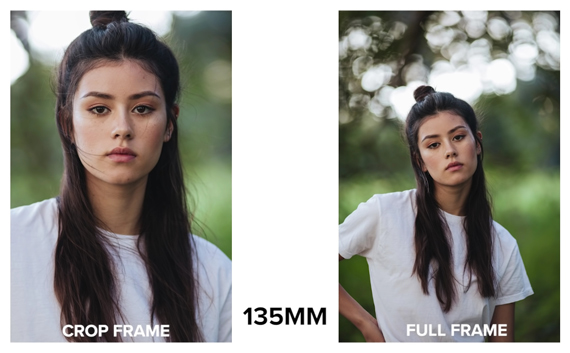






@George Theodore,
The first series of photos (same shooting position) shows the differences in crop and depth of field. In other words, the geometry in focus is the same, but the depth of field varies with focal length. For example, compare the backgrounds for 85 mm and 135 mm.
The second and third series mostly show the differences in field of view (landscape). The fourth and last series shows the differences in distortion (face) and blur (background). All series compare the crop of the crop sensor versus the full frame.
Hope this helps.
I agree with Gary Hook. What’s the purpose of this article?
Wow.
If you are taking the shots from the same spot, you have -exactly- the same amount of distortion, given a specific focal length, on both sizes of sensor, because it and the geometry of the shot do not change. Same distance to subject elements, same focal length: (almost the) same image. Different depth of field, slightly, if the CoC changes.
If your model changes her head position, you’ll see a difference. Therefore, the comparisons in this article are specious.
How can you not know this?